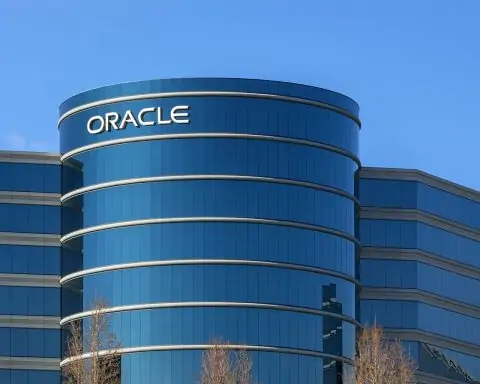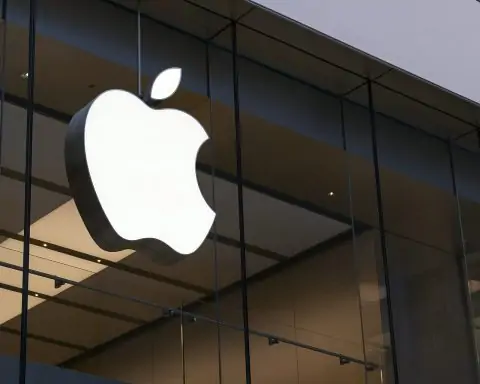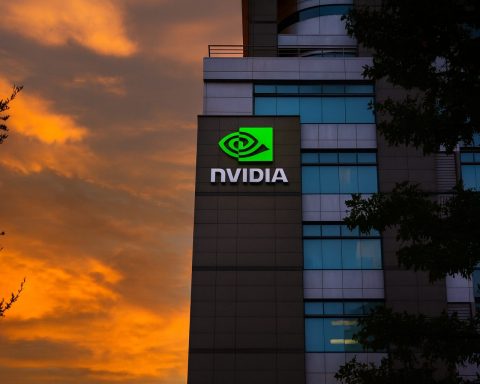- In 2024 the global space economy reached $415 billion, with commercial satellite activities totaling about $293 billion (71%).
- The number of active satellites rose from about 3,300 in 2020 to over 11,500 by end-2024 due to mega-constellations.
- SpaceX and OneWeb have joined traditional players like Airbus, Boeing, Lockheed Martin, Thales Alenia, Intelsat, SES, Eutelsat, and Inmarsat, intensifying competition.
- By 2035 the global satcom market could exceed $500 billion, more than 5× its 2024 size.
- The satellite internet access market is forecast to grow from $14.6 billion in 2024 to $312.3 billion by 2035, a ~32% CAGR, driven by Starlink and other LEO constellations (OneWeb, Amazon Kuiper).
- Asia-Pacific is the fastest-growing region, expected to reach around 25%+ of global satcom revenues by 2030, while China plans about 13,000 LEO satellites to rival Starlink by 2030.
- Regulators are tackling spectrum sharing and space debris: over 36,000 pieces of debris >10 cm are tracked today, the US FCC has a 5-year deorbit rule, and first debris-removal missions may operate by 2035.
- Global government space spending reached about $135 billion in 2024, with defense accounting for roughly $73 billion, led by the U.S. DoD’s use of systems like WGS and MUOS.
- The sector has seen major mergers in 2023, including Viasat’s $7.3 billion acquisition of Inmarsat and Eutelsat’s takeover of OneWeb, creating configurations with GEO-LEO capabilities.
- Key tech trends include LEO/MEO mega-constellations with inter-satellite laser links and software-defined payloads, plus increasing 5G NTN integration for direct-to-device connectivity.
Overview: The global satellite communications (satcom) industry is entering a decade of explosive growth and transformation. In 2024, the overall space economy reached $415 billion, with commercial satellite activities (like communications and broadcasting) dominating about $293 billion (71%) of that total [1]. The number of active satellites in orbit has surged from ~3,300 in 2020 to over 11,500 by end-2024, thanks to new “mega-constellations” of communications satellites [2]. This rapid expansion of space infrastructure – largely for broadband connectivity – is outpacing revenue growth and driving down costs per satellite. Established aerospace giants (e.g. Airbus, Boeing, Lockheed Martin, Thales Alenia) and traditional satcom operators (Intelsat, SES, Eutelsat, Inmarsat) are now joined by “NewSpace” entrants like SpaceX and OneWeb, intensifying competition [3]. The stage is set for satellite communications to skyrocket in scale from 2025 to 2035, fueled by demand for connectivity, technological innovations, and bold investments. This report provides a comprehensive outlook for the global satcom market over the next decade, including market size forecasts, regional and segment analysis, emerging tech trends, key players’ strategies, regulatory developments, and investment/M&A activity.
Market Size Projections and Growth Forecasts (2025–2035)
Global satellite communications market revenue is set to expand dramatically over the next decade. Estimates vary depending on what is included (satellite services, ground equipment, etc.), but all point to robust growth:
- Baseline Market Size: The satcom sector (services and equipment) was valued around $84–100 billion in 2023-2024 [4] [5]. One analysis pegged 2025’s market at $98.3 billion [6], while a broader definition (including more satellite services) puts 2025 closer to $200 billion [7].
- Growth Trajectory: Industry forecasts project annual growth rates around 9–12% through the late 2020s [8] [9]. For example, the market is expected to rise from about $200.3 billion in 2025 to $318.9 billion by 2030, a ~9.8% CAGR [10]. Similarly, a more conservative outlook sees $159.6 billion by 2030 from a ~$98 billion base in 2025 (10.2% CAGR) [11]. Despite differences in definitions, both forecasts indicate a near doubling of annual revenues by 2030.
- Year-by-Year Growth: Table 1 illustrates an approximate year-by-year trajectory, extrapolating current growth trends. By 2035, if momentum continues, the global satcom market could exceed $500 billion (more than 5× its 2024 size). This growth reflects satellites becoming a backbone of global communications.
Table 1. Projected Global Satellite Communications Market Size, 2025–2035 (USD billions, approximate) [12] [13]
| Year | Market Size (USD billions) | Notable Milestones |
|---|---|---|
| 2025 | 200 [14] | Massive LEO constellations deployment underway (e.g. Starlink Gen2); rising demand for remote connectivity. |
| 2026 | ~220 | New satellites bolster capacity; integration with 5G begins in earnest (3GPP NTN standards). |
| 2027 | ~245 | Satellite broadband subscriber base surges; emerging markets come online via LEO satellites. |
| 2028 | ~270 | Many airlines and ships now connected; major GEO high-throughput satellites (HTS) launched. |
| 2029 | ~295 | OneWeb–Eutelsat multi-orbit network operational; regional broadband initiatives (e.g. EU IRIS²) near launch. |
| 2030 | 319 [15] | Market ~doubles vs 2025; satcom ~$320B. Global internet coverage substantially improved by satellites. |
| 2031 | ~350 | Second-gen LEO constellations rollout; direct-to-device satellite smartphone services start scaling. |
| 2032 | ~385 | Quantum satellite links begin pilot use for secure comms; deep integration of satcom in telecom networks. |
| 2033 | ~425 | Greater consolidation in industry; hybrid space-terrestrial networks common for broadband and IoT. |
| 2034 | ~470 | Over 100k active satellites in orbit (most for comms); advanced optical inter-satellite networks deployed. |
| 2035 | ~520 (est.) | Market 5× vs 2024; satcom integral to global 5G/6G infrastructure and ubiquitous connectivity. |
Sources: 2025 and 2030 figures from Mordor Intelligence [16] [17]. 2035 is an extrapolation assuming high-single-digit growth persists (not a direct source figure). Actual outcomes will depend on technology adoption and market dynamics.
Drivers of Growth: The above outlook is highly optimistic, but grounded in real drivers. Key growth catalysts include the rollout of high-capacity LEO networks connecting millions of new users, pent-up demand for broadband in underserved regions, and rising enterprise/military reliance on satellites for mission-critical links. A recent industry report notes that as digital connectivity becomes indispensable, satellites are stepping in to bridge gaps where fiber and cellular networks can’t reach [18]. By 2030, researchers project the global satcom market (services + ground equipment) could top $300 billion, up from ~$200 billion in the mid-2020s [19], as “broadband for all” via constellations (Starlink, OneWeb, Amazon’s Kuiper, etc.) connects millions of new consumers and businesses [20]. Another huge contributor is enterprise and government network demand for redundancy and IoT backhaul, plus mobility uses (airlines, ships, even connected vehicles) [21]. If technically successful, direct-to-smartphone satellite services could unlock billions of new users, further enlarging the market [22]. All these trends underpin double-digit annual expansion through most of the 2025–2035 period.
Growth Variations: Not all segments will grow uniformly, of course. The fastest growth is expected in new data-centric services (broadband, mobile connectivity), whereas legacy areas like satellite TV broadcasting are flat or declining. For instance, the satellite internet access segment (consumer broadband via satellite) is a standout: from just $14.6 billion in 2024, it’s forecast to skyrocket to $312.3 billion by 2035 – a staggering ~32% CAGR [23]. This reflects the anticipated success of LEO broadband constellations in reaching tens of millions of subscribers. By contrast, traditional satellite pay-TV services have matured; Direct-to-Home (DTH) television revenues are stable or shrinking as streaming proliferates (we discuss this in Key Segments). Overall, however, strong growth in data services will far outweigh declines in legacy services, keeping total satcom industry growth on a rapid upward trajectory.
Regional Analysis: North America, Europe, Asia-Pacific, Latin America, Middle East & Africa
The satcom boom is a global phenomenon, but its impact and growth rates vary by region. Figure estimates and market research indicate the following regional outlook:
- North America (NA): Current Leader, Slower Growth. North America is the largest satcom market, accounting for an estimated 35–50% of global revenues. In 2023 it made up about 43% of the market. Another analysis showed NA dominated 2023 with a 48.5% share [24]. The United States drives this with heavy government and military satcom spending and a thriving commercial sector. U.S. defense agencies increasingly buy commercial satellite services – e.g. the U.S. Marine Corps using commercial SATCOM “as a Managed Service” for agile, secure comms [25]. The presence of industry giants like SpaceX (Starlink), Viasat, Hughes, etc., and high bandwidth demand in rural and remote areas, keeps North America at the forefront. NA’s growth is solid but relatively mature; its share may gradually dip below 40% by 2035 as other regions accelerate. Still, ongoing innovation investment and integration of satcom into 5G in the U.S. and Canada will ensure North America remains a satcom powerhouse through 2035.
- Europe: Second-Largest, Embracing Multi-Orbit Systems. Europe currently represents the second-largest satcom market (roughly 20–25% of global) [26]. Key drivers are the modernization of digital infrastructure and bridging the rural connectivity gap across EU countries. For example, Germany is investing in satellite broadband to connect rural areas as part of its Digital Agenda [27]. Europe’s satcom sector has a strong mobility component too – growing connectivity for aviation and maritime given high passenger and trade activity [28]. European governments are highly involved: the EU has launched a €10+ billion IRIS² multi-orbit constellation project to ensure secure communications and “digital sovereignty” in response to Starlink [29] [30]. The IRIS² plan (≈300 satellites in LEO/MEO by 2030) involves a consortium of European operators (SES, Eutelsat, Hispasat) and is partially EU-funded. This exemplifies Europe’s cooperative approach and strategic focus on satcom. By 2035, Europe’s market will grow steadily, though perhaps not as explosively as Asia-Pacific. We expect Europe to maintain around 20% of global satcom revenues, with high uptake of satcom for government, maritime, and backup connectivity.
- Asia-Pacific (APAC): Fastest Growth, Rising Share. Asia-Pacific is the fastest-growing satcom region, poised to close the gap with Europe by 2030. Although APAC accounted for only ~20% of global satcom revenues in the early 2020s, it is projected to expand rapidly to around 25%+ by 2030 [31]. Huge demand comes from populous nations with connectivity needs (China, India, Indonesia), extensive maritime domains, and rising defense budgets. China’s satcom market in particular is booming, driven by government-backed technology advancements, broadband demand, and push for self-reliant networks [32]. China is deploying its own LEO broadband mega-constellation (projected ~13,000 satellites) to rival Starlink by 2030 [33]. Other APAC countries are also expanding satcom usage: Japan is investing in LEO constellations for rural broadband and disaster communications [34]; India has opened its space sector to private satcom companies and sees satellite internet as key to connecting remote communities. By the 2030s, APAC will likely be a co-equal market leader. We anticipate Asia-Pacific to vie with North America for the largest share by 2035, fueled by a large base of new consumers coming online and aggressive government support for satellite connectivity.
- Latin America: Emerging Opportunities in Remote Coverage. Latin America currently constitutes a modest slice (~8%) of the satcom market [35], but it is growing steadily (~9% CAGR foreseen to 2030) [36]. The region’s geography – vast rural expanses, Amazon rainforest, mountains – makes satellite links essential to connect isolated communities. Countries like Brazil, Mexico, Chile and others are adopting satellite broadband to extend internet and cellular backhaul to underserved areas [37]. In 2024, Latin America’s satcom revenues were about $7.4 billion [38]; by 2030 this is expected to reach ~$12.6 billion [39]. Growth is also driven by enterprise use (energy, mining sectors rely on VSAT networks in remote sites) and the introduction of LEO services (Starlink has been rolling out service in countries like Chile, Brazil, providing much higher speeds to remote users). Latin America’s share of global market may remain under 10%, but satellite connectivity will play an outsized role in its overall telecom infrastructure, helping close the digital divide in rural areas.
- Middle East & Africa (MEA): High Need for Connectivity, Gradual Growth. The Middle East and Africa region also represents a single-digit percentage of the global satcom market today (roughly in the same range as Latin America). However, the potential need here is enormous – Africa has the world’s largest unconnected populations, and satellites offer a quick deployment solution where terrestrial networks are lacking. Growth in Africa’s satcom usage is propelled by international development programs and companies providing connectivity to schools, clinics, and villages via satellite. Local players like Yahsat (UAE) and Arabsat (Saudi-based) serve the Middle East with broadcast and broadband services, while others like Nigeria’s NigComSat and South Africa’s initiatives target African coverage. The Middle East’s demand is boosted by oil & gas industry communications, defense needs, and wealthier consumer markets in the Gulf adopting satellite IPTV and internet on yachts/aircraft. We expect MEA’s satcom market to expand significantly (perhaps doubling by 2030), but from a small base. By 2035, MEA could approach a low-teens percentage of the global market. Realizing this will require continued lowering of costs and cooperative efforts to bring affordable terminals to developing regions. International programs (e.g. UN initiatives for universal internet access by 2030) heavily involve satellite solutions for Africa. In summary, while North America and Europe lead in revenue, Asia-Pacific and eventually MEA lead in growth rate, with Latin America steadily advancing – making the satcom boom a truly worldwide trend.
Key Industry Segments (Military, Commercial, Maritime, Aviation, Enterprise, Consumer Broadband)
The satellite communications ecosystem serves a diverse range of end-users and applications. For clarity, we break the market into several key segments and verticals, each with its own dynamics:
- Military and Government: Secure communications for defense and government agencies form a cornerstone of the satcom market. Militaries worldwide rely on satellites for beyond-line-of-sight connectivity, encrypted command & control links, drone feeds, and mission-critical communications. Global government spending on space hit a record $135 billion in 2024, 54% of which was defense-related (~$73 billion) [40] – a large portion directed to military communications satellites and networks. The U.S. Department of Defense leads here (e.g. the U.S. has its WGS and MUOS satcom systems, and is the largest buyer of commercial capacity too), but other nations are ramping up: China, Russia, India, NATO and Middle Eastern countries all invest heavily in milsatcom for strategic autonomy. This segment is growing steadily (~7–10% annually) as security concerns rise. One estimate projects government/military satcom revenues will grow from ~$50 billion in 2024 to ~$64 billion by 2030 [41]. A notable trend is militaries leveraging commercial satellites to augment capacity. For example, U.S. armed forces are increasingly adopting commercial SATCOM-as-a-service models for flexibility [42]. We also see the convergence of military and commercial tech – e.g. governments tapping into SpaceX Starlink for battlefield connectivity, or partnering with operators for hosted payloads. By 2035, expect international cooperation (like combined allied satcom capabilities) and next-gen jam-resistant, laser-linked military satellite networks to further boost this segment.
- Commercial Communications: This broad segment covers all non-military uses, from broadcasting media to enterprise data networks. Historically, broadcast TV and radio were the largest commercial satcom services – direct-to-home television, satellite radio (e.g. SiriusXM) – which still generate tens of billions annually. However, this sub-sector is mature or declining; satellite radio is steady but not high-growth, and DTH TV revenues are eroding as streaming and fiber broadband spread. Industry reports note that the satcom sector is in transition: data-centric services are rising fast while legacy video broadcasting is contracting [43]. Major satellite operators like SES and Intelsat have seen TV broadcast revenues flatten or fall, prompting them to rebalance toward broadband and mobility services [44]. Thus, the “commercial” segment is shifting focus. Today, a lot of commercial satcom revenue comes from managed network services for corporations, cellular backhaul for telecom operators (using satellites to connect remote cell towers), and cloud connectivity (satellite links for AWS, Azure in far-flung areas). This segment also includes private enterprise networks (e.g. mining or energy companies linking their sites) and Internet of Things (IoT) connectivity for industry. The bottom line: commercial satcom is healthy and growing, but the makeup is changing – with broadband data services eclipsing one-way TV distribution. By 2035, commercial usage will be dominated by internet connectivity, and video/content delivery will likely mostly ride over internet protocols (possibly still via satellite CDN nodes) rather than traditional broadcast.
- Maritime Communications: The maritime satcom sub-market covers connectivity to ships at sea – including commercial shipping, naval vessels, cruise ships, offshore rigs, and private yachts. Reliable broadband at sea has gone from a luxury to a near-necessity for operations, crew welfare, navigation and IoT monitoring of ship systems. The maritime satcom market is growing at ~11% annually and is forecast to reach $8.46 billion by 2030 [45]. Key drivers are the increasing data needs of modern vessels (for example, real-time engine monitoring, video calls for crews, or transmitting cargo data), as well as regulations mandating connectivity for safety. Cruise lines now offer passengers Wi-Fi comparable to onshore, enabled by HTS satellites and now LEO constellations. Major trends in this segment include the adoption of VSAT terminals on ships to enable high-bandwidth links, and a shift to LEO satellites for lower latency coverage on oceans [46]. Services like Starlink Maritime (launched 2022) deliver hundreds of Mbps to vessels, disrupting traditional maritime operators. Additionally, 5G at sea is emerging: integration of satellite with 5G networks will extend coverage to maritime corridors [47]. By 2035, we can expect most ships – from mega cargo vessels to small fishing boats – to carry some form of satellite communicator. Maritime satcom will be essential for route optimization, autonomous shipping, and crew connectivity, with LEO/MEO networks providing seamless global ocean coverage that far outstrips today’s capabilities.
- Aviation Communications: In-flight connectivity for airline passengers, cockpit data links, and connectivity for unmanned aerial systems all fall into this segment. Like maritime, aero satcom is booming as airlines outfit fleets with Wi-Fi and real-time telemetry. The market for airborne satcom (commercial aviation, business jets, and military aircraft connectivity) is expected to roughly double from ~$5–6 billion in 2024 to ~$10–12 billion by the early 2030s [48]. On passenger jets, satellite internet has become a competitive differentiator – new electronically-steered flat panel antennas and high-throughput satellites allow planes to offer streaming-capable internet at 35,000 feet. Both GEO operators (e.g. Viasat’s Ka-band satellites) and LEO constellations (Starlink Aviation, OneWeb’s in-flight solutions) are serving this market. By 2035, it’s likely that in-flight broadband will be standard on most airlines globally, with many using LEO for low-latency, high capacity service (Starlink has already signed hundreds of aircraft, and OneWeb is partnering with airlines as well). Beyond passenger Wi-Fi, satellites are critical for cockpit safety communications (especially over oceanic routes beyond VHF radio range) and for new applications like drones and UAVs control links. The adoption of IoT in aviation (e.g. real-time engine monitoring, predictive maintenance data streamed via satcom) is another growth driver [49] [50]. In the defense realm, airborne satcom enables surveillance drones and military transports to have constant connectivity. Overall, aviation will be one of the highest-growth niche segments, fueled by the expectation of connectivity anywhere, anytime – even at 10km altitude.
- Enterprise & Industrial Connectivity: This segment refers to businesses, industries, and institutions using satellite communications for their private data and IoT needs. It overlaps somewhat with “commercial,” but here we emphasize specific enterprise verticals: energy (oil, gas, mining), banking (e.g. ATMs in remote areas linked by satcom), agriculture (IoT sensors on farmland), transportation & logistics (fleet tracking), and emergency response (portable satellite terminals for disaster areas). Enterprises often deploy VSAT networks – small private satellite terminals at multiple sites – to ensure reliable communications independent of local infrastructure. For instance, a mining company may use satcom to network its mines, or retail chains may use satellite backup for POS transactions. Satellite IoT is a fast-growing piece here: by one estimate, satellite IoT revenues, while relatively small (~$1.5 billion by 2030), are growing ~22% annually as millions of IoT devices in remote locations (pipelines, environmental sensors, cargo containers, etc.) get connected [51]. The enterprise segment is poised for strong growth through 2035 because of the sheer expansion of connected devices. As 5G networks roll out, satellites are being integrated to extend 5G for industrial IoT in rural areas (the 5G NTN standard). We also see cloud service providers collaborating with satellite operators to enable direct cloud access from remote sites. By 2035, many enterprises will treat satellites as just another node in their network – aided by user-friendly flat antennas and affordable capacity. Enterprise connectivity via satellite will especially be critical in regions with unreliable terrestrial networks, allowing businesses in Africa, South Asia, etc., to stay online.
- Consumer Broadband: Perhaps the most game-changing segment is consumer satellite broadband – providing high-speed internet directly to individual households and small users. This segment is being revolutionized by LEO constellations. Traditionally, consumer broadband via satellite was a niche (offered by GEO satellites like Viasat and HughesNet, with limited speeds and high latency). Now, SpaceX’s Starlink (with ~4,500 LEO satellites launched as of 2025) and upcoming constellations (OneWeb, Amazon Kuiper, Telesat Lightspeed) are bringing fiber-like speeds to consumers globally, with latency low enough for video calls and gaming. The result is a dramatic market expansion: the satellite internet access market is projected to explode from $14.6 billion in 2024 to over $312 billion by 2035 [52]. That equates to hundreds of millions of users potentially subscribing to satellite ISPs by 2035. The drivers are straightforward – billions of people still lack broadband due to geography, and satellites can reach them without laying cable. Companies are racing to acquire these new customers in emerging markets, while also serving RV owners, rural residents in rich countries, and even consumers on the go (via flat panel terminals on vehicles). Competition is intense: Starlink has first-mover advantage, but OneWeb (backed by Eutelsat) is targeting consumer and enterprise hybrid services, and Amazon’s Kuiper is set to launch thousands of satellites with $10 billion invested to start commercial service by ~2025. Traditional GEO operators (Viasat, Hughes) are also launching next-gen high-throughput GEO satellites to stay in the game, often bundling with new LEO capacity (Hughes, for example, resells OneWeb in areas where it complements their GEO service). By 2035, consumer broadband is expected to be the largest satcom segment by revenue, as tens of millions of households in Asia, Africa, Latin America, and remote parts of developed countries get online via satellite. The challenge will be keeping prices affordable to truly reach the mass market – something operators are striving for by achieving scale (Starlink’s goal is to push terminal costs down and launch costs with Starship). If successful, this segment’s growth will fulfill the lofty vision of “Broadband for All” and make satellite communication a mainstream consumer utility.
Emerging Technology Trends (LEO/MEO Constellations, 5G Integration, Software-Defined Satellites, Quantum Communications, etc.)
The coming decade will bring profound technological shifts in satellite communications. Several key trends are shaping the future of satcom, enabling the growth described:
- Rise of LEO & MEO Mega-Constellations: The traditional model of a few large geostationary (GEO) satellites is being upended by constellations of dozens, hundreds, or thousands of smaller satellites in Low Earth Orbit (LEO) and Medium Earth Orbit (MEO). These networks (e.g. Starlink, OneWeb, Amazon’s Kuiper, SES O3b mPOWER, Telesat Lightspeed) offer global coverage, low latency (for LEO ~20–50 ms), and unprecedented total capacity by frequency reuse. By 2030, companies will have deployed tens of thousands of LEO satellites for communications. This shift to LEO/MEO is a game-changer: it enables continuous coverage in polar and remote regions, better performance for real-time applications, and new services like direct-to-handset connectivity. However, it also raises challenges like satellite collision avoidance and spectrum sharing (discussed later). In parallel, High-Throughput GEO satellites (HTS) are evolving – modern GEO birds can deliver >1 Tbps of throughput (through spot-beam technology). The future satcom infrastructure will likely be a hybrid multi-orbit mesh, where user traffic is routed via the optimal satellite (GEO for steady broadcasting, LEO for interactive data, MEO for regional resilience). Already, inter-satellite links (ISL) using lasers are being added to constellations (e.g. Starlink’s newer sats have optical crosslinks) to create a space-based data backbone. This reduces reliance on ground stations and allows routing data in-space at light speed across the globe. By 2035, seamless handoff between orbits and integrated LEO/GEO networks will be standard, fulfilling the vision of internet everywhere from space.
- Integration with 5G/6G and Terrestrial Networks: The boundary between satellite and terrestrial telecom is blurring. 5G standards (3GPP Release 17+) explicitly include Non-Terrestrial Networks (NTN), meaning phones and IoT devices can connect to satellites using 5G waveforms. This integration is leading to direct partnerships – e.g. satellite operators working with mobile network operators to extend coverage. A prime example is SpaceX partnering with T-Mobile to use Starlink for direct-to-phone texting in remote areas, leveraging T-Mobile’s cellular spectrum. Apple’s iPhone 14 introduced emergency SOS messaging via Globalstar satellites in orbit. By the late 2020s, it’s expected that major telecom providers will bundle satellite connectivity as part of their service, and smartphones will routinely switch to satellite mode when out of cell tower range. 5G’s successor, 6G, also envisions satellites as an integral component for global coverage. On the ground side, telecom infrastructure is being built to accommodate satcom: for instance, cloud providers are hosting satellite ground station services (AWS Ground Station, etc.) to route satellite data directly into the internet backbone. In essence, satellites are becoming just another access network in the broader internet/telecom architecture. This promises truly ubiquitous coverage (even on airplanes, ships, deserts) and more resilient networks (satellites can backhaul 5G towers or connect them if fiber is cut). Regulators are adapting too – allocating spectrum for these hybrid networks and ensuring interference is managed as satellites and terrestrial systems share frequencies (e.g. the ongoing debates about satellite vs 5G in the 12 GHz band in the US). By 2035, the concept of being out of coverage may fade away, as your phone or device will seamlessly roam from terrestrial 5G to satellite and back.
- Software-Defined & Flexible Satellites: Traditionally, communication satellites had fixed configurations (beam coverage, bandwidth, etc. set at launch). Now, a new generation of software-defined satellites is coming online, which can be reprogrammed in orbit. These satellites use digital payloads and beam-forming that can dynamically allocate capacity to different areas and frequencies on demand. Companies like Airbus (OneSat line) and Boeing (702X platform) have developed satellites whose coverage and power can be reshaped by software updates. This adds tremendous flexibility – an operator can reassign capacity from, say, a region with low usage to a hotspot region during a big event, or adapt to shifts in demand over the satellite’s lifetime. Intersatellite links (ISLs) (often laser-based) are another part of flexibility, allowing satellites to relay data among themselves and route traffic optimally. The trend toward fully digital, “software-defined” satellites means satellites will become more like network routers in the sky, managed in real-time. This is already evident in high-end systems: for example, new GEO HTS like Jupiter-3 and ViaSat-3 have flexible beam allocation, and SES’s O3b mPOWER MEO satellites use dynamic beam hopping to serve users. By 2035, most communications satellites launched will likely have this reconfigurable capability. This not only improves service quality but also reduces costs long-term (fewer satellites can handle more varied tasks). Moreover, if combined with AI-driven control systems, satellite networks will autonomously optimize themselves – a concept often referred to as the “self-driving network” in space. The net effect is more capacity where it’s needed, lower latency through intelligent routing, and greater resilience in case of outages (since traffic can be rerouted via software). Technologically, this trend is enabled by advanced onboard processors and RF payloads, as well as growing use of phased array antennas on satellites and ground, which can steer beams electronically.
- Quantum Communications & Cybersecurity: Looking further ahead, quantum communication via satellites is an emerging trend aiming to deliver virtually unhackable links. Quantum Key Distribution (QKD) uses quantum physics to securely share encryption keys, and satellites are a great platform to do this over long distances (since fiber optic QKD is limited by loss). In 2016, China launched the world’s first quantum science satellite (Mozi), which successfully demonstrated satellite-to-ground QKD over 1,200 km and even satellite-mediated quantum entanglement [53] [54]. This was a breakthrough showing that quantum-encrypted satellite links are feasible. Europe, Japan, Canada and others have since invested in their own quantum satellite programs (e.g. Europe’s EuroQCI initiative plans a quantum communications constellation by late 2020s). By 2035, we may see an initial quantum-encrypted satellite network in operation for banks, governments, and military use, providing ultra-secure communications. While quantum communication won’t be a large revenue driver in the near-term (it’s more of an add-on service for security), it’s a crucial tech trend to watch because of its strategic importance. Aside from QKD, satellites are also adopting more cybersecurity measures as they become software-driven and interconnected. There’s increasing use of encryption on all satellite links, anti-jamming technologies, and even concepts for resilient mesh networks that can route around compromised nodes. The rise of quantum also means satellite systems must be prepared for a “post-quantum” cryptography era (ensuring today’s encrypted data isn’t easily crackable by future quantum computers). In summary, quantum tech in satcom is currently in R&D, but by the 2030s it will likely augment the satcom toolkit for secure communications, especially in government and financial sectors.
- Other Notable Trends: In addition to the above, a few other technological developments will influence satcom’s trajectory:
- Advanced Ground Segment: User terminals and ground antennas are improving rapidly. Electronically Steered Antennas (ESAs) with no moving parts are being mass-produced, driving down the size/cost of satellite dishes (think flat laptop-sized antennas for cars or small home terminals). Companies like Kymeta, Viasat, and SpaceX are innovating on this front. By 2035, consumers might have satcom receivers as cheap and easy as a satellite TV dish or integrated into phones (for basic texting).
- Optical Communication: Using lasers instead of radio frequencies can dramatically increase link capacity (multi-Gbps) and security. We discussed inter-satellite lasers, but also expect satellite-to-ground laser links to become common for high-bandwidth trunk connections (weather permitting, as clouds affect them). NASA and commercial demos have already achieved gigabit laser downlinks from space. Optical links might supplement traditional RF, especially for backhaul in clear-weather regions.
- Artificial Intelligence: AI and machine learning are being applied to optimize satellite networks – from autonomous satellite constellation operations (auto-collision avoidance, optimal routing) to dynamic spectrum management. AI can predict traffic patterns and allocate resources accordingly. It can also help in signal interference mitigation by smartly filtering noise and interference between many satellites.
- Hybrid Satcom Architectures: There’s a trend toward multi-layered networks combining GEO, MEO, LEO, HAPS (High-Altitude Platform Systems like stratospheric balloons/drones), and terrestrial. This could yield the best of each platform – e.g., HAPS for city-wide coverage, LEO for global reach, GEO for broadcasting – all orchestrated together. Early examples include LTE networks using balloons and satellites together for disaster response.
- Energy and Propulsion Improvements: Advancements in electric propulsion mean satellites (especially LEO) have longer lifetimes and can maneuver to avoid debris. Cheaper launch via reusable rockets (SpaceX Falcon 9, and possibly Starship, Blue Origin’s New Glenn) is lowering the cost per satellite deployed, thus encouraging larger constellations. By 2035, even nuclear-powered spacecraft or tugs could appear, which might reposition communication platforms or serve as power/data relay stations in higher orbits.
In summary, technology trends in satcom are all about boosting capacity, flexibility, and integration. As one industry summary noted, satellites are becoming more powerful and flexible (some new GEOs exceeding 1 terabit/second throughput), LEO constellations provide low-latency coverage, and integration with terrestrial 5G/6G is actively underway for seamless global connectivity [55]. These innovations will make satellite networks far more capable and user-friendly by 2035, solidifying their role in the global telecom ecosystem.
Major Players and Market Strategies (SpaceX, OneWeb, SES, Eutelsat, Inmarsat, Viasat, Hughes, Telesat)
The satcom industry’s competitive landscape is a mix of established operators and new disruptors (“NewSpace” companies), each with different strategies. Below is a comparative summary of several key players and how they are positioning for the 2025–2035 market:
Table 2. Leading Satellite Communication Players and Their Strategies
| Company / Operator | Constellation & Orbits | Key Strategies and Market Focus |
|---|---|---|
| SpaceX (Starlink) | LEO constellation (→12,000+ sats planned); also GEO launches (Falcon/Starship) | Vertical integration: builds and launches its own satellites at scale. Focus on consumer broadband (Starlink now serves 60+ countries) and enterprise/defense contracts (e.g. Starlink for military comms). Aggressively cutting costs (reusable rockets, mass-produced terminals). Pioneering direct-to-cell service via partnerships with cellular operators. |
| OneWeb & Eutelsat | LEO constellation (~648 sats in first gen) plus Eutelsat’s GEO fleet (36 sats) | Multi-orbit strategy: merged in 2023 to combine OneWeb’s LEO broadband with Eutelsat’s GEO coverage. Targeting enterprise, aviation, maritime and government markets rather than direct consumers. Leveraging Eutelsat’s strong video broadcast business to cross-sell data services. Plans to expand LEO (Gen2 constellation) and integrate with EU’s IRIS² system. |
| SES S.A. | GEO fleet (~50 sats) + MEO constellation (O3b mPOWER, 11 sats) | High-capacity networks: offers managed data services for aviation, maritime, telecom backhaul, and government. Pivoting from traditional TV broadcasting to data-centric business. Multi-orbit approach – seamlessly switching users between GEO (wide coverage) and MEO (low-latency high throughput). Invests in innovation (e.g. flat antennas, cloud integration). Explored M&A (was in talks to merge with Intelsat) to gain scale. |
| Inmarsat & Viasat | GEO fleets (Inmarsat: 14 sats; Viasat: 5+ HTS sats) – merging (deal completed 2023) | Global mobility and broadband: the merged Viasat-Inmarsat combines Viasat’s consumer ISP and airline Wi-Fi business in the Americas with Inmarsat’s dominant maritime/aviation and government services globally [56]. Strategy is to build a global GEO network (ViaSat-3 constellation + Inmarsat’s GX network) offering high-speed broadband and IoT everywhere. Also exploring LEO partnerships to augment GEO. Post-merger, focusing on hybrid space-terrestrial solutions (e.g. combining satellite spectrum and 5G for inflight connectivity). |
| Hughes (EchoStar) | GEO satellites (Jupiter fleet) + investment in OneWeb LEO + terrestrial 5G via Dish Network | Bridging consumer and enterprise: Hughes (part of EchoStar) is a major provider of consumer satellite internet in Americas (HughesNet) and networks for enterprises. It holds a significant stake in OneWeb and is distributing OneWeb’s LEO service to enterprise/government customers [57]. In 2023 EchoStar merged with Dish Network, aiming to integrate Dish’s 5G mobile network with Hughes’ satellite services (creating converged offerings) [58] [59]. Hughes focuses on affordable community Wi-Fi hotspots via satellite in developing markets and continues to supply VSAT hardware globally. |
| Telesat | GEO satellites (Telstar series) + planned LEO (Lightspeed ~198 sats) | Enterprise focus, capital discipline: Canada’s Telesat has long served telecom and broadcast clients via GEO. It is now developing Lightspeed LEO aimed at delivering fiber-like connectivity to enterprise/government users (e.g. 5G backhaul, remote mining, airplanes). Faced with funding challenges, Telesat downsized its LEO plan (from 298 to 198 satellites) to cut costs [60]. Strategy: focus on high-margin segments (government, aviation, offshore, etc.) rather than mass consumer. Also lobbying for Canadian government support and partnering with firms like MDA for cheaper LEO satellite manufacturing. |
Other Key Players: The satcom market features many other important players and alliances. Intelsat, once the largest GEO operator, remains a major provider of media & network services and is pursuing its own network upgrades (it emerged from bankruptcy in 2022 and has been rumored in merger talks, e.g. with SES, to stay competitive). Regional operators like Thuraya/Yahsat (UAE), Arabsat (Middle East), Star One (Latin America), China Satcom, Russian RSCC, etc., each serve local markets and often have government backing. On the manufacturing side, companies like Thales Alenia Space, Airbus, Boeing, Lockheed Martin build many of the satellites and are developing the new digital payload tech powering next-gen systems [61]. New entrants focused on specialized services include Iridium (100% LEO satellite phone/IoT network, which completed refresh of its 66-satellite constellation in 2019 and is adding new services), and AST SpaceMobile and Lynk Global (startups launching LEO satellites designed to connect directly to unmodified mobile phones, partnering with cellular operators worldwide). Amazon’s Project Kuiper deserves mention too – while not yet in service, Amazon is investing at least $10 billion in a LEO constellation (over 3,200 satellites planned) to compete in broadband by late 2020s, leveraging its ecommerce and cloud might to bundle satellite internet with cloud and retail services. By 2035, Kuiper could be a heavyweight alongside Starlink and OneWeb, dramatically shaping consumer options.
Competitive Strategies: A few strategic themes cut across these players:
- Orbit Diversification: Companies are moving to multi-orbit strategies – e.g. GEO operators acquiring or partnering on LEO systems – to offer the best of both worlds. This is seen in Eutelsat-OneWeb, SES, and others linking with LEO providers.
- Vertical Integration vs Specialization: SpaceX’s model is highly vertically integrated (it controls launch, satellites, user terminals, and service), whereas others form partnerships (OneWeb relies on partners for launch and distribution, etc.). Vertical integration can yield cost advantages (SpaceX’s Starlink reportedly operates at lower cost per bit delivered than traditional firms [62]) but requires massive capital. Others opt to specialize or collaborate to achieve scale.
- Target Markets: Different players target different slices. Consumer mass-market vs premium enterprise/government is a key divide. Starlink initially went consumer; OneWeb explicitly went for enterprise/gov first. Viasat/Inmarsat and Hughes straddle both but lean toward high-value mobility and government contracts (higher ARPU customers). Telesat is firmly enterprise/gov. This segmentation will persist – not every operator wants to fight in the low-ARPU consumer space against Starlink.
- Innovation and Service Differentiation: Many compete on technology features – e.g. higher throughput and lower latency (Starlink touts low latency; Viasat touts huge GEO capacity per satellite), or network reliability and security (Inmarsat markets the high reliability of its ELERA L-band network for safety services). Managed services and integration is another angle: SES and Intelsat increasingly offer end-to-end managed networks (including ground systems, network management) rather than raw bandwidth, to lock in enterprise customers.
- Global Coverage and Regulatory Access: Gaining landing rights and spectrum access in all countries is a challenge – this is a strategic focus particularly for newer players. SpaceX has to navigate regulatory approvals country by country to sell Starlink (some countries like India initially held up permission). OneWeb, being partly government-owned (UK) and with international shareholders, leverages diplomatic channels. Amazon will likely leverage its global presence too. Meanwhile, Chinese and Russian systems may create essentially parallel satcom ecosystems serving their spheres of influence, due to geopolitical splits.
- Consolidation: The industry is consolidating via mergers (discussed below in M&A). The major GEO operators have shrunk in number via mergers (e.g. the big four of 2010 – Intelsat, SES, Eutelsat, Telesat – are now effectively three with Eutelsat-OneWeb). More consolidation could come if, for example, SES and Intelsat revisit a merger, or if regional players combine to compete with global giants. NewSpace startups, if they struggle, may get acquired by incumbents for technology or market access. The competitive landscape by 2035 will likely have a few super-constellations (Starlink, Kuiper, etc.), a handful of global GEO+LEO operators (SES, Eutelsat-OneWeb, Viasat-Inmarsat, maybe Intelsat), and several niche/regional providers.
Overall, the major players are positioning themselves through alliances, technology investments, and new services to capture the burgeoning demand. As one market review noted, the satcom market is “fiercely competitive, with major players vying for contracts in both commercial and government sectors” [63]. Companies are investing in LEO constellations, multi-band systems, 5G integration, and forming partnerships or acquisitions to strengthen their offerings across aviation, maritime, defense, and consumer broadband [64]. The next decade will likely see winners and losers shake out – those that successfully scale constellations and manage debt will thrive, while others might fail or merge if they can’t monetize quickly enough. The stakes (and rewards) are high in this new “space race” for global connectivity.
Regulatory Environment and International Cooperation Developments
The rapid expansion of satellite communications has outpaced many existing regulations, forcing regulators and international bodies to play catch-up. Key regulatory and cooperative developments include:
- Spectrum Allocation and Interference Management: Radiofrequency spectrum is the lifeblood of satcom, and it’s a finite resource. With so many new satellites (especially in LEO) vying for spectrum, regulators face the challenge of preventing harmful interference. The International Telecommunication Union (ITU), which coordinates global spectrum use, has been inundated with filings for large constellations. Ensuring that Starlink, OneWeb, Kuiper, and others can all operate without drowning each other out (or interfering with terrestrial 5G) is a delicate task. There is growing pressure on the ITU and national regulators to update rules for mega-constellations to co-exist peacefully [65]. For instance, debates rage over the 12 GHz band in the US (terrestrial 5G vs satellite downlinks) and the Ka-band globally (sharing between GEO and LEO systems). We’ve seen some progress: recent World Radiocommunication Conferences (WRC) have adopted new sharing criteria for NGSO (non-geostationary) systems and identified new spectrum for satellite broadband in V-band and beyond. But achieving global consensus is hard – especially as geopolitical rivalry can spill into spectrum debates (e.g. U.S. and allies vs China advocating different standards) [66]. Looking ahead, expect more stringent requirements for constellation operators (like spectrum sharing mechanisms, requirement to coordinate with earlier-filed systems, etc.). Regulators may also get tougher on “paper satellites” (filings not followed by real deployments). Overall, spectrum policy will continue evolving through international cooperation at the ITU, albeit slowly, to accommodate the new satcom reality.
- Orbital Debris and Space Traffic Management: The proliferation of satellites in LEO raises serious concerns about space debris and collision risk. Over 36,000 pieces of debris >10 cm are tracked in orbit today [67], and collisions (such as the 2009 Iridium-Cosmos smash or 2021’s Russian ASAT test debris) exacerbate the issue [68]. A cascade of collisions (the dreaded Kessler Syndrome) could render popular orbits unusable. To prevent this, regulators are enacting new rules: for example, the U.S. FCC in 2022 adopted a landmark 5-year deorbit rule, requiring LEO satellites to be deorbited within 5 years of mission end (down from the earlier 25-year guideline). Internationally, there is movement toward norms of responsible behavior – e.g. nearly 150 countries agreed on long-term sustainability guidelines at the UN, and efforts are underway to ban destructive ASAT tests. Space Traffic Management (STM) is still nascent but developing: agencies and private firms are improving tracking and notification of maneuvers. The U.S. Commerce Department is working on an Open Architecture Data Repository for space traffic to share orbit data. There’s discussion of active debris removal services and whether operators should be mandated (or incentivized) to use them for dead satellites. By 2035, we might see the first debris removal missions operational (companies like Astroscale are testing tech to capture defunct sats). All major satcom companies now design satellites with deorbit capability and are required in some jurisdictions to carry enough fuel or drag devices for deorbit. International cooperation is key here: just as aviation has global air traffic control, space may need a global STM entity. The bottom line – regulators are waking up to ensure that the explosion in satellite numbers doesn’t result in a tragedy of the commons in orbit. Expect more stringent licensing conditions on collision avoidance, insurance, and disposal of satellites in the coming years [69] [70].
- National Regulatory Reforms: On the national level, many countries are updating their space and telecom regulations to facilitate satellite services. The United States, for example, created a new Space Bureau at the FCC (2023) to handle satellite licensing, reflecting the surge of applications. The FCC has been expediting approvals for large constellations (Starlink Gen2, Kuiper, OneWeb Gen2 all received approvals with conditions). However, they also sometimes pause to consider interference complaints (as when Dish Network challenged Starlink’s use of the 12 GHz band). In Europe, national regulators and the EU are simplifying market access for satellite broadband – e.g. several EU nations have blanket licensing for user terminals to ease Starlink/OneWeb deployment. India, initially protective, has now allowed foreign satcom operators to partner locally (OneWeb, after its acquisition by Bharti, was quickly approved, and Starlink is expected to follow under certain conditions). Many countries still require “landing rights” (local gateways or partnerships) for constellations – this is leading to deals like Starlink partnering with local telecoms in various countries. In short, regulatory barriers are gradually lowering as governments see the value of satellites for connectivity, but each country still wants to ensure sovereignty (data localization, security vetting of foreign satellites, etc. can apply). We also see some governments (e.g. China) taking a more protectionist stance – China is unlikely to allow Starlink commercial service domestically, instead deploying its own “Guowang” LEO constellation and requiring foreign sat operators to get licensed through Chinese partners [71]. By 2035, we may have a more harmonized regulatory environment for satcom terminals (perhaps global type approvals) akin to how mobile roaming is standardized – or at least frameworks for mutual recognition of licenses, given the truly global nature of these services.
- International Cooperation Projects: Besides regulations, international cooperation is evident in joint satellite projects. The EU’s IRIS² secure connectivity constellation (discussed under Europe region) is a prime example of pooling resources among countries for a common satcom infrastructure [72] [73]. Likewise, Artemis Accords and other space diplomacy efforts, while mostly about exploration, foster an environment of collaboration that can spill into communications. There are also regional initiatives: e.g. the African Union has expressed interest in a pan-African satellite program for broadband, and certain Arab states jointly operate satellites (Arabsat is owned by a consortium of 21 countries). Military satcom alliances are forming too – NATO coordinates some allied satcom capabilities, and the U.S., Canada, and others have the combined Wideband Global Satcom (WGS) partnership (several allied nations funded WGS satellites to share capacity). In the 2030s, as satcom becomes even more crucial, we might see more international satellite networks where multiple nations co-fund and share a system (especially for governmental communications, to reduce reliance on foreign commercial systems). The United Nations ITU and Office for Outer Space Affairs (UNOOSA) are also forums for cooperation on issues like allocating slots for satellites for development purposes, or ensuring equitable access to orbital resources for developing countries. All these efforts underscore that satcom’s growth is prompting global cooperative frameworks – no single country can manage the orbital commons and spectrum alone.
- Policy for New Services (Direct-to-Device, etc.): Regulators are also contending with novel services that blur traditional categories. For example, satellite direct-to-smartphone services raise the question: is it a mobile service (regulated under cellular rules) or a satellite service? Companies like Lynk Global have asked the FCC to treat their LEO-to-phone service under existing satellite rules, while some terrestrial carriers argue it should be under cellular licensing. The FCC and others are crafting frameworks (the FCC proposed a “Supplemental Coverage from Space” rulemaking in 2023) to allow satellite operators to partner with mobile network operators and use part of their spectrum for space-based service. This is a form of regulatory innovation to accommodate convergence. Another area is air and maritime connectivity: regulators are making it easier to use Ku/Ka-band on aircraft and ships (earth station in motion – ESIM regulations were updated globally in recent years to allow this on certain bands without case-by-case licensing). By 2035, we’ll likely have established rules for things like satellite 5G base stations, maritime 5G via satellite backhaul, etc., enabling smoother integration of satellites into mainstream telecom offerings.
- Sustainability and Public Perception: Though not “regulation” in a strict sense, public and scientific community concerns are influencing policy. Astronomers have raised issues about thousands of LEO satellites causing light pollution and interfering with telescope observations. This led SpaceX to implement measures like darkening Starlink satellites and visors, and the FCC now considers astronomy impacts in licensing to some degree. Environmental concerns (debris re-entry pollution, launch emissions) are also on the radar; future regulations might impose debris mitigation fees or environmental assessments for mega-constellations. All these factors mean that operators are being encouraged (or forced) to adopt responsible practices, and international cooperation (through workshops between satellite companies and astronomers, for instance) is ongoing to mitigate issues.
In summary, the regulatory environment for satellite communications is in a dynamic phase of evolution. Regulators and international bodies are actively addressing spectrum congestion, orbital debris, and new service integration, albeit sometimes a step behind the technological realities. The need for global cooperation is higher than ever – be it coordinating spectrum at the ITU, or preventing collisions in orbit through shared data. Encouragingly, there are concrete moves in this direction: for example, discussions on space traffic management norms and efforts to harmonize spectrum for satellite 5G have begun in multi-nation forums [74] [75]. The success of the satcom industry over the next decade will depend not just on rockets and satellites, but also on getting these policy pieces in place to ensure a sustainable and accessible space environment.
Investment Trends and M&A Activity
The satellite communications boom has been matched by a flurry of investment and consolidation as companies race to scale up and secure competitive advantages. Key trends include:
- Surge (and Flux) in Private Investment: From about 2015 through 2021, there was an unprecedented influx of venture capital and private investment into space and satcom startups. Billions flowed into new launchers, LEO constellation ideas, and antenna technology companies. Several satcom companies went public via SPAC mergers around 2020-2021 (e.g. AST SpaceMobile, Spire, Virgin Orbit for launch). However, the investment climate shifted around 2022-2023 as some high-profile ventures struggled or failed, and interest rates rose. Access to financing remains a challenge for capital-intensive projects [76]. For instance, OneWeb famously went bankrupt in 2020 before being rescued by the UK government and Bharti Global. Telesat spent years seeking funding for Lightspeed and had to downsize its plans. Many launch startups folded, and satellite IoT ventures consolidated. That said, money is still available for promising satcom plays – SpaceX continues to raise massive rounds (valued at ~$150 billion in 2023 after funding for Starship and Starlink expansion). Amazon is investing at least $10 billion in Kuiper internally (effectively one of the largest single investments in satcom ever). Traditional operators are seeking partners or government co-funding (the EU’s IRIS² will combine public and private funds). Strategic investors have also played a role: e.g., Google and Fidelity invested $1 billion in SpaceX in 2015; SoftBank invested in OneWeb; Lockheed Martin in 2022 invested in Omnispace (for satellite IoT/5G). The coming years may see a mix of funding sources – some government backing (for strategic networks), big tech companies investing to ensure connectivity for their services (like Microsoft investing in SpaceX’s last round, reportedly to secure Azure cloud connections via Starlink), and continued VC for niche innovations (like ground equipment, quantum comm startups, etc.). Overall, while the frothy exuberance has cooled, the fundamental growth story of satcom keeps investors interested. The industry might shift to more of a growth-equity and infrastructure investor focus (as revenue ramps up, satellites might be seen like telecom towers or fiber, attracting infrastructure funds).
- Major Mergers & Acquisitions: The satcom sector is consolidating as players seek scale and to fill gaps in capabilities:
- The biggest recent deal was Viasat’s acquisition of Inmarsat for $7.3 billion (announced 2021, closed in 2023), combining a leading US consumer broadband provider with the top global mobility satcom provider [77]. This merger created a geographically complementary giant with a fleet of ~19 GEO satellites and a strong presence in aviation, maritime, and defense markets. The rationale: together they can offer multi-band (Ka, L-band) services and compete better globally (and also combine R&D on new satellites).
- Another transformative deal: Eutelsat’s merger with OneWeb (announced 2022, completed in 2023). Eutelsat took over OneWeb (valuing it around $3.4 billion) in exchange for OneWeb’s owners getting ~50% of the combined company. This move created the world’s first integrated GEO-LEO operator. Eutelsat’s strong broadcast and European market position plus OneWeb’s LEO network gives the new entity a broad portfolio. It’s partly a defensive move against Starlink/Amazon, but also an offensive one to offer multi-orbit services that neither had alone.
- Dish Network and EchoStar (Hughes) re-merger (2023): Satellite TV provider Dish and satellite internet provider EchoStar (which were originally part of Charlie Ergen’s empire before splitting in 2008) agreed to merge back together in 2023 [78] [79]. The deal, completed by the end of 2023, combines Dish’s pay-TV satellites and spectrum (and its nascent 5G wireless network) with Hughes’ broadband satellites and tech. This is aimed at creating a converged company that can deliver content and connectivity across satellite and terrestrial wireless – essentially acknowledging that satellite TV alone is a declining business, so integration with broadband and 5G is needed.
- Intelsat and SES have flirted with merging – in 2020 Intelsat attempted to acquire SES (didn’t happen), and in 2023 reports emerged of renewed merger talks which eventually fell through over valuation disagreements. If they ever combine, it would create a behemoth GEO operator. Even without merging, they cooperate in some areas (both jointly invested in C-band spectrum clearing in the US, which gave them a multi-billion windfall from 5G operators – money they are now using to pay down debt and invest in new satellites).
- In the mobile satellite (MSS) segment, earlier consolidations included Yahsat (UAE) acquiring Thuraya in 2018 to expand into mobile satellite phones and data. There are only a few MSS players left: Iridium (independent), Globalstar (focus on IoT and now Apple partnership), and Inmarsat (now part of Viasat). It wouldn’t be surprising if in the future Globalstar or Iridium become targets for telecom companies or others who want ready-built global IoT/backup networks (though Iridium’s unique low-frequency LEO system has kept it independent so far).
- NewSpace M&As: A lot of small tech companies in antenna design, satellite manufacturing, and downstream services have been acquired by bigger firms or merged. For example, Planet (EO company) bought VanderSat (for analytics) – not directly satcom but adjacent. In satcom ground equipment, firms like Gilat, Comtech have acquired smaller startups to add capabilities. We may also see some constellation ventures merge or cooperate if funding is tight – e.g., could Telesat partner with Amazon or someone if Lightspeed needs help? There’s speculation but nothing concrete yet.
- Horizontal vs Vertical integration: Some M&A is about combining similar businesses for scale (Viasat-Inmarsat both operate satellites), others are about vertical integration (Dish-EchoStar combining content, terrestrial network with satellite network). We also see tech giants coming in: e.g., in 2020, Amazon acquired satellite antenna startup Kuiper Systems (formerly Facebook’s team) to boost Kuiper; Apple acquired a few small wireless tech companies which might relate to its satellite ambitions.
- Public-Private Partnerships: While not “M&A,” it’s worth noting that governments are investing in satcom via partnerships. The EU IRIS² is one such example (contracts awarded to a consortium of private firms in 2024 for a partly EU-funded constellation). Another is Artemis Accords and NASA’s commercial Lunar communications contracts – companies building Moon relay satellites. Closer to Earth, organizations like the World Bank and regional development banks are funding satellite projects to connect remote regions, often in partnership with operators. These kinds of cooperative investments blur the line between public and private money in satcom.
- Stock Market and Valuations: Many satcom players are publicly traded or will be. The stocks of traditional operators (SES, Eutelsat, etc.) have been under pressure for years due to flat broadcast revenues, but the new growth narrative could change that. Meanwhile, SpaceX remains private but with a sky-high valuation; if it or a segment (Starlink) ever IPOs, it would be one of the largest space IPOs in history. OneWeb was going to go public via SPAC in 2021 but opted for the Eutelsat deal instead. Some newer companies that did go public via SPAC have seen volatile performance (AST SpaceMobile, for instance, is still pre-revenue and stock swings on each tech milestone). As satcom becomes more core to connectivity, we might see mainstream telecom investors pay more attention – essentially treating LEO constellations akin to new telecom infrastructure rollouts. By 2035, the industry structure (post-mergers) will likely have fewer, larger players with steadier cash flows, which could make them more attractive to infrastructure funds and public markets.
- Investment in Ground Segment: It’s not just satellites – significant investment is flowing to ground infrastructure and tech that supports satcom. For example, Amazon is spending heavily on building 12 ground station sites for Kuiper around the world. Microsoft and Google invested in ground networks to directly tie satellites into data centers (for cloud services). Antenna manufacturers are raising funds to build cheaper phased-array user terminals (a key to unlocking consumer market at scale is affordable antennas). The growth of satcom drives a mini-boom in these supporting industries as well, which in turn has seen M&A (e.g., in 2022 Viasat bought antenna-maker Inflight Connectivity from Israel, and Gilat Satellite Networks has made acquisitions in modem technology, etc.).
- Financial Health and Risks: Despite optimism, the industry is capital-intensive, and some companies carry heavy debt (especially legacy GEO operators who borrowed against future revenue that didn’t fully materialize). Intelsat and OneWeb went through bankruptcy restructurings in the past few years – highlighting that the satcom business can be unforgiving if markets shift or huge spectrum auctions (like C-band in the US) alter business plans. As interest rates have risen, the cost of borrowing for new satellites is higher, possibly encouraging more sharing of infrastructure (another cooperation form) or leasing models (some companies now lease capacity from others rather than own all assets). An interesting development is satellite as a service or hosted payload offerings, where a company can put a transponder on someone else’s satellite rather than build their own – this could attract non-traditional players (say, a big tech firm wants a specific LEO capacity for its use – it could just pay to be on another constellation instead of building from scratch).
In conclusion, investment trends in 2025–2035 show a maturing industry shaking out: we’ve passed through a Wild West of numerous entrants, and now there’s consolidation into larger entities with diversified capabilities. Mergers like Viasat-Inmarsat and Eutelsat-OneWeb illustrate the drive to achieve global scale and multi-orbit offerings. The capital markets are still very much interested – as long as companies can demonstrate a path to profitability. With the market set to potentially triple or more by 2035, investors see huge opportunity, but they are also cautious after some early setbacks. The satcom industry’s ability to deliver on growth projections will depend on sustained investment in innovation and likely further M&A to combine strengths and reduce duplication. As one analysis noted, despite challenges, opportunities are vast and growing as space becomes more interwoven with Earth’s economy and daily life [80]. The next decade will witness not just a technological race, but also a financial and strategic one – with those firms best balancing risk, innovation, and collaboration coming out on top.
Conclusion
By 2035, satellite communications will have evolved from a niche backstop for connectivity into a central pillar of the global communications infrastructure. The market is on track to scale to hundreds of billions of dollars, fueled by the convergence of satellites with mainstream telecom and the relentless demand for connectivity everywhere on Earth. Year-by-year, we will see satellites bringing online new regions and new user groups – from villagers in remote continents finally getting internet access, to airlines offering streaming in-flight, to smart ships and IoT networks spanning the oceans. The regional makeup of the market will broaden, with Asia-Pacific and other emerging regions taking a larger share alongside the traditionally dominant North America and Europe. New technologies will make satellite networks faster, more flexible, and integrated – multi-orbit constellations ensuring no corner of the globe is left behind, satellites talking to smartphones, and even quantum-encrypted links securing our data. The competitive landscape will likely consolidate around a few mega-constellations and multi-orbit operators, but competition will remain fierce, driving continuous innovation and (hopefully) affordable pricing for end users.
Crucially, the progress expected comes with responsibilities: industry and governments must work together on sustainable practices (to keep orbits safe and clean), on fair spectrum sharing, and on bridging the digital divide in a way that’s inclusive. International cooperation – whether through joint projects like IRIS² or through UN/ITU frameworks – will be vital in managing the challenges of congestion and coordination in space [81] [82]. Encouraging signs, like new regulations for debris mitigation and collaborative norms, suggest we are heading in the right direction.
In a nutshell, the period from 2025 to 2035 will be a transformational era for satellite communications. After decades of being the unsung workhorse behind TV and niche connectivity, satellites are now stepping into the limelight as a key solution for global broadband. The market outlook is one of dramatic growth – with forecasts of doubling and even quintupling in size – but also one of maturation and integration into the broader digital ecosystem. For businesses and investors, it’s a space (literally and figuratively) ripe with opportunity, though not without competition and execution risks. For society at large, the outcome could be profoundly positive: a world where access to information is not constrained by geography, enabled by constellations of satellites orbiting overhead. In the words of industry observers, satellite communication is poised to “deliver multi-gigabit links to anywhere on the globe” by 2030, reshaping connectivity as we know it [83]. By 2035, it’s likely that the sky will truly be no limit for communications – fulfilling the promise of a connected planet, one satellite at a time.
Sources: The information in this report was synthesized from a variety of industry reports, market research studies, and news releases, including data from Grand View Research [84], Mordor Intelligence [85], SNS Insider [86], TS² Space’s Global Satellite Industry Report [87] [88], and others as cited throughout the text. These sources provide detailed insights into market forecasts, technological trends, and competitive developments driving the satellite communications outlook for 2025–2035.
References
1. ts2.tech, 2. ts2.tech, 3. ts2.tech, 4. www.globenewswire.com, 5. www.grandviewresearch.com, 6. www.grandviewresearch.com, 7. www.mordorintelligence.com, 8. www.grandviewresearch.com, 9. www.mordorintelligence.com, 10. www.mordorintelligence.com, 11. www.grandviewresearch.com, 12. www.mordorintelligence.com, 13. www.mordorintelligence.com, 14. www.mordorintelligence.com, 15. www.mordorintelligence.com, 16. www.mordorintelligence.com, 17. www.mordorintelligence.com, 18. www.gminsights.com, 19. ts2.tech, 20. ts2.tech, 21. ts2.tech, 22. ts2.tech, 23. www.metatechinsights.com, 24. www.gminsights.com, 25. www.gminsights.com, 26. www.marketresearchfuture.com, 27. www.gminsights.com, 28. www.marketresearchfuture.com, 29. www.reuters.com, 30. www.reuters.com, 31. www.grandviewresearch.com, 32. www.gminsights.com, 33. ts2.tech, 34. www.gminsights.com, 35. www.grandviewresearch.com, 36. www.grandviewresearch.com, 37. www.bnamericas.com, 38. www.grandviewresearch.com, 39. www.grandviewresearch.com, 40. ts2.tech, 41. reports.valuates.com, 42. www.gminsights.com, 43. ts2.tech, 44. ts2.tech, 45. www.linkedin.com, 46. www.linkedin.com, 47. www.linkedin.com, 48. www.emergenresearch.com, 49. www.marketresearchfuture.com, 50. www.marketresearchfuture.com, 51. www.communicationstoday.co.in, 52. www.metatechinsights.com, 53. www.forbes.com, 54. www.forbes.com, 55. ts2.tech, 56. www.marketresearchfuture.com, 57. www.globenewswire.com, 58. about.dish.com, 59. www.satellitetoday.com, 60. ts2.tech, 61. www.globenewswire.com, 62. ts2.tech, 63. www.gminsights.com, 64. www.gminsights.com, 65. ts2.tech, 66. ts2.tech, 67. ts2.tech, 68. ts2.tech, 69. ts2.tech, 70. ts2.tech, 71. ts2.tech, 72. www.reuters.com, 73. www.reuters.com, 74. ts2.tech, 75. ts2.tech, 76. ts2.tech, 77. www.marketresearchfuture.com, 78. about.dish.com, 79. www.satellitetoday.com, 80. ts2.tech, 81. ts2.tech, 82. ts2.tech, 83. ts2.tech, 84. www.grandviewresearch.com, 85. www.mordorintelligence.com, 86. www.globenewswire.com, 87. ts2.tech, 88. ts2.tech










